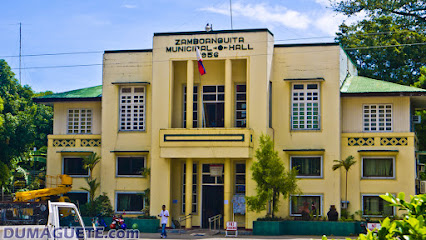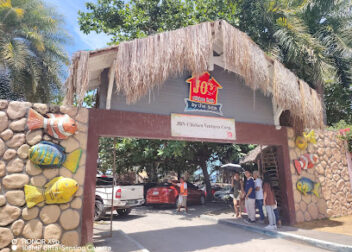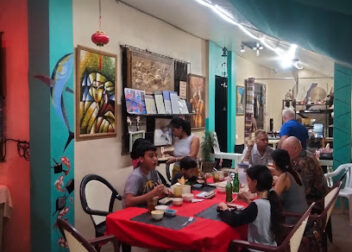Negros Island Region: A Journey Through History, Culture, and Development
The Negros Island Region (NIR) in the Philippines is a fascinating area rich in history, culture, and natural beauty. Comprising the provinces of Negros Occidental, Negros Oriental, and Siquijor, the region has undergone significant changes over the years, shaping its unique identity and development trajectory.
Historical Background
The concept of a unified Negros Island Region dates back to the 1980s when officials from Negros Occidental and Negros Oriental proposed the idea of a one-island, one-region unit. This initiative aimed to address the administrative challenges posed by the two provinces being part of different regions1. The first iteration of the NIR was established on May 29, 2015, but was dissolved in 2017. The region was re-established on June 11, 2024, with the inclusion of Siquijor1.
Negros Island itself has a rich pre-colonial history. Originally known as Buglas, the island was home to various indigenous groups, including the Ata. The western part of the island was influenced by the Kedatuan of Madja-as, while the eastern part was under the Rajahnate of Cebu2.
Geographical and Demographic Overview
Negros Island is the fourth largest island in the Philippines, covering an area of 13,309.60 square kilometers. It is surrounded by several bodies of water, including the Guimaras Strait, Visayan Sea, Tañon Strait, and Bohol Sea2. The island is divided into two main provinces: Negros Occidental in the west and Negros Oriental in the east. Siquijor, a smaller island province, is located southeast of Negros1.
As of the 2020 census, the total population of the Negros Island Region is approximately 4.76 million people1. The region’s largest city is Bacolod, which serves as one of the regional centers along with Dumaguete1.
Cultural Significance
The Negros Island Region is a melting pot of cultures, with influences from various ethnic groups, including the Hiligaynons and Cebuanos. The region is known for its vibrant festivals, such as the MassKara Festival in Bacolod and the Buglasan Festival in Dumaguete. These festivals showcase the region’s rich cultural heritage through colorful parades, traditional dances, and local cuisine1.
The region is also home to several historical landmarks, such as The Ruins in Talisay City, a mansion built in the early 20th century, and the St. Francis of Assisi Church in Siquijor1. These sites offer a glimpse into the region’s colonial past and architectural heritage.
Economic Development
The re-establishment of the Negros Island Region is seen as a significant step towards promoting economic development and administrative decentralization. The NIR Act, signed into law by President Ferdinand Marcos Jr., aims to strengthen local autonomy and accelerate economic, cultural, and social development3. The region is envisioned to become a center of economic growth in the Visayas, with a focus on unified and coordinated island development planning3.
Agriculture remains a vital sector in the region’s economy, with sugarcane being the primary crop. Negros Occidental is known as the “Sugarbowl of the Philippines” due to its extensive sugar plantations2. Other important agricultural products include rice, corn, and various fruits and vegetables.
In recent years, the region has also seen growth in the tourism sector, thanks to its natural attractions such as Mount Kanlaon, the highest peak in the region, and the pristine beaches of Siquijor1. Efforts are being made to promote sustainable tourism and preserve the region’s natural beauty.
Challenges and Opportunities
The journey to re-establish the Negros Island Region was marked by decades of struggle, determination, and political maneuvering4. One of the main challenges faced by the region is ensuring equitable distribution of resources and addressing the concerns of local stakeholders. During the initial discussions, there were concerns about potential disadvantages for Negros Oriental compared to Negros Occidental4.
However, the successful re-establishment of the NIR presents numerous opportunities for the region. The unified region is expected to facilitate more effective and efficient delivery of essential services, improve infrastructure, and attract investments3. The regional development council, once fully operational, will play a crucial role in coordinating development initiatives and ensuring that the benefits of economic growth are shared across the region3.
Future Prospects
Looking ahead, the Negros Island Region is poised for significant growth and development. The national government has pledged support to bring the new region up to speed as quickly as possible3. With a focus on unity and collaboration, the region’s leaders are optimistic about the future and are committed to building a more prosperous and flourishing Negrense community3.
In conclusion, the Negros Island Region is a testament to the resilience and determination of its people. From its rich historical roots to its vibrant cultural heritage and promising economic prospects, the region continues to evolve and thrive. As it embarks on this new chapter, the NIR stands as a beacon of hope and progress in the heart of the Visayas.
1: Wikipedia – Negros Island Region 2: Wikipedia – Negros 3: Philippine News Agency – Negros Island Region fully functional by 2025 4: Rappler – Negros Island Region reborn: The long road to new beginnings



